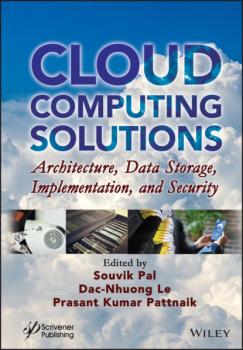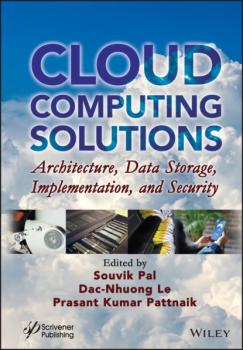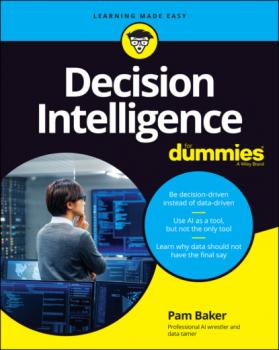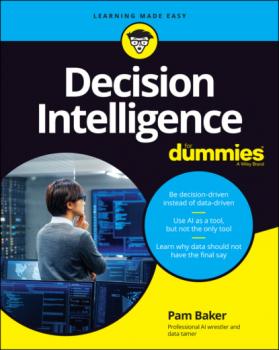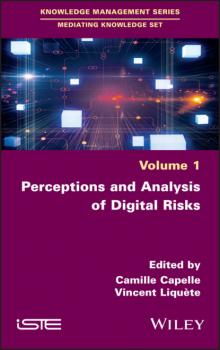Базы данных
Различные книги в жанре Базы данныхЦенность ваших данных
Что такое данные и как они появляются? Как их хранить и преобразовывать? Как извлечь ценность из имеющихся информационных ресурсов и непрерывно ее повышать? Как ускорить импортозамещение? Как наладить управление данными, чтобы достойно противостоять дизруптивным воздействиям? Все это и многое другое вы найдете в книге «Ценность ваших данных». Книга состоит из двух частей. В первой прослеживается смена парадигм в отношении к данным, происходившая от первой научной революции до четвертой промышленной. Подробно рассматриваются особенности данных как наиболее ценного актива организации и основные барьеры на пути извлечения из них ценности. Вторая часть посвящена описанию основных подходов к устранению барьеров. Анализируются ключевые области управления данными на разных этапах их жизненного цикла – от планирования до расширения возможностей применения. Зачем читать Данные в качестве самостоятельного суперценного актива стремительно входят в повестку дня как менеджмента и собственников компаний, так и руководителей государственных органов и учреждений. И очень важно иметь источники информации, позволяющие его осознать, научиться с ним работать и превратить в конкурентное преимущество. Предлагаемая книга – одно из тех изданий, которые позволяют получить своевременные инструменты для создания современной высокоэффективной организации и вывода своего бизнеса в лидеры рынка. Для кого Книга будет полезна как новичкам в вопросах управления данными, так и опытным специалистам, которые хотят углубить свои знания в этом направлении.
Cloud Computing Solutions
CLOUD COMPUTING SOLUTIONS The main purpose of this book is to include all the cloud-related technologies in a single platform, so that researchers, academicians, postgraduate students, and those in the industry can easily understand the cloud-based ecosystems. This book discusses the evolution of cloud computing through grid computing and cluster computing. It will help researchers and practitioners to understand grid and distributed computing cloud infrastructure, virtual machines, virtualization, live migration, scheduling techniques, auditing concept, security and privacy, business models, and case studies through the state-of-the-art cloud computing countermeasures. This book covers the spectrum of cloud computing-related technologies and the wide-ranging contents will differentiate this book from others. The topics treated in the book include: The evolution of cloud computing from grid computing, cluster computing, and distributed systems; Covers cloud computing and virtualization environments; Discusses live migration, database, auditing, and applications as part of the materials related to cloud computing; Provides concepts of cloud storage, cloud strategy planning, and management, cloud security, and privacy issues; Explains complex concepts clearly and covers information for advanced users and beginners. Audience The primary audience for the book includes IT, computer science specialists, researchers, graduate students, designers, experts, and engineers who are occupied with research.
Data Mining and Machine Learning Applications
DATA MINING AND MACHINE LEARNING APPLICATIONS The book elaborates in detail on the current needs of data mining and machine learning and promotes mutual understanding among research in different disciplines, thus facilitating research development and collaboration. Data, the latest currency of today’s world, is the new gold. In this new form of gold, the most beautiful jewels are data analytics and machine learning. Data mining and machine learning are considered interdisciplinary fields. Data mining is a subset of data analytics and machine learning involves the use of algorithms that automatically improve through experience based on data. Massive datasets can be classified and clustered to obtain accurate results. The most common technologies used include classification and clustering methods. Accuracy and error rates are calculated for regression and classification and clustering to find actual results through algorithms like support vector machines and neural networks with forward and backward propagation. Applications include fraud detection, image processing, medical diagnosis, weather prediction, e-commerce and so forth. The book features: A review of the state-of-the-art in data mining and machine learning, A review and description of the learning methods in human-computer interaction, Implementation strategies and future research directions used to meet the design and application requirements of several modern and real-time applications for a long time, The scope and implementation of a majority of data mining and machine learning strategies. A discussion of real-time problems. Audience Industry and academic researchers, scientists, and engineers in information technology, data science and machine and deep learning, as well as artificial intelligence more broadly.
Decision Intelligence For Dummies
Learn to use, and not be used by, data to make more insightful decisions The availability of data and various forms of AI unlock countless possibilities for business decision makers. But what do you do when you feel pressured to cede your position in the decision-making process altogether? Decision Intelligence For Dummies pumps the brakes on the growing trend to take human beings out of the decision loop and walks you through the best way to make data-informed but human-driven decisions. The book shows you how to achieve maximum flexibility by using every available resource, and not just raw data, to make the most insightful decisions possible. In this timely book, you’ll learn to: Make data a means to an end, rather than an end in itself, by expanding your decision-making inquiries Find a new path to solid decisions that includes, but isn’t dominated, by quantitative data Measure the results of your new framework to prove its effectiveness and efficiency and expand it to a whole team or company Perfect for business leaders in technology and finance, Decision Intelligence For Dummies is ideal for anyone who recognizes that data is not the only powerful tool in your decision-making toolbox. This book shows you how to be guided, and not ruled, by the data.
Perceptions and Analysis of Digital Risks
The concept of digital risk, which has become ubiquitous in the media, sustains a number of myths and beliefs about the digital world. This book explores the opposite view of these ideologies by focusing on digital risks as perceived by actors in their respective contexts.<br /><br /><i>Perceptions and Analysis of Digital Risks</i> identifies the different types of risks that concern actors and actually impact their daily lives, within education or various socio-professional environments. It provides an analysis of the strategies used by the latter to deal with these risks as they conduct their activities; thus making it possible to characterize the digital cultures and, more broadly, the informational cultures at work.<br /><br />This book offers many avenues for action in terms of educating the younger generations, training teachers and leaders, and mediating risks.
Computation in BioInformatics
COMPUTATION IN BIOINFORMATICS Bioinformatics is a platform between the biology and information technology and this book provides readers with an understanding of the use of bioinformatics tools in new drug design. The discovery of new solutions to pandemics is facilitated through the use of promising bioinformatics techniques and integrated approaches. This book covers a broad spectrum of the bioinformatics field, starting with the basic principles, concepts, and application areas. Also covered is the role of bioinformatics in drug design and discovery, including aspects of molecular modeling. Some of the chapters provide detailed information on bioinformatics related topics, such as silicon design, protein modeling, DNA microarray analysis, DNA-RNA barcoding, and gene sequencing, all of which are currently needed in the industry. Also included are specialized topics, such as bioinformatics in cancer detection, genomics, and proteomics. Moreover, a few chapters explain highly advanced topics, like machine learning and covalent approaches to drug design and discovery, all of which are significant in pharma and biotech research and development. Audience Researchers and engineers in computation biology, information technology, bioinformatics, drug design, biotechnology, pharmaceutical sciences.

